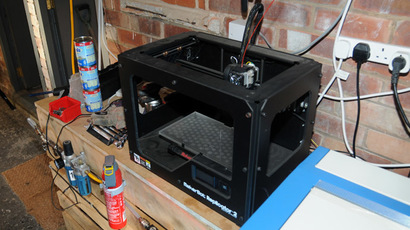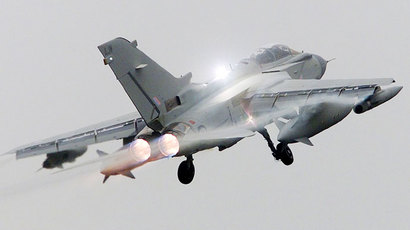3D printing tech used to reconstruct man’s face in groundbreaking surgery

For what appears to be the first time in history doctors were able to use 3D printing technology during a facial reconstruction surgery to help a British man who survived a motorcycle accident but walked away traumatized and disfigured.
Stephen Power of Cardiff, Wales was hospitalized for four months after he endured multiple injuries in a 2012 accident. He was wearing a helmet at the time of the crash but still suffered gruesome injuries.
“I broke both cheek bones, top jaw, my nose and fractured my skull,” Power, 29, told Hywel Griffith of the BBC. “I can’t remember the accident – I remember five minutes before and then waking up in the hospital a few months later.”
Surgeons at Morriston Hospital in Swansea, Wales used CT scans to recreate Power’s face and then print a symmetrical 3D model of his cranium. They then cut that mould down with cutting guides and printed plates to restructure his face.
The procedure lasted eight hours, culminating with medical-grade titanium implants set into his face to ensure that the bones remain in place.
Power said that before the surgery he would hide his face with help from a hat and glasses. That is no longer necessary, thanks to the surgeons and their willingness to try what could become a more common method of operation.
“It’s totally life changing,” Power said. “I could see the difference straight away the day I woke up from the surgery…I’ll be able to do day-to-day things, go and see people, walk in the street, even go to any public areas.”
Maxillofacial surgeon Adrian Sugar said in a statement that the results were unlike anything he’s encountered before.
“Without this advanced technology, it’s freehand. You have to guess where everything goes,” he said, as quoted by the AFP’s Guy Jackson. “The technology allows us to be far more precise and get a better result for the patient.”
The process of 3D printing includes manually entering geometric data into a computer and forming it into graphics, a process that has been compared to digital sculpting. The computer then scans the “sculpture” and forms a physical, three dimensional model of the desired piece.

Printers have already been used to design new technology that could be used in zero or low gravity situations in outer space. Last year, a US-based group made international headlines after announcing it planned to “[design a working plastic gun that could be downloaded and reproduced by anybody with a 3D printer,” as quoted by Forbes’ Andy Greenberg.
The idea of 3D printers helping potentially dangerous people build their own high-powered killing machines was unsettling, although the possibility that 3D printers could be used to benefit someone who had suffered a serious injury did not seem to be considered at the time.
Stephen Power appears to be the first person to have undergone such an extensive surgery with help from a 3D printer. Yet dozens of patients in the UK last year did experience similar surgeries to aid with various maladies they were experiencing.
Ann O’Sullivan, a grandmother who lives in Roehampton, in south-western London, thought she had a sinus problem only to go to the doctor and be informed that she was in fact experiencing the rapid growth of a tumor just beneath the skin on her face.
“I’ve always been healthy so it came as a shock when the doctor referred me to the hospital where the scan revealed a tumor. The hardest thing to take was the loss of my left eye,” she told Emma Innes of the Daily Mail last year. “The surgeons told me it was just rotten luck but that I was lucky the tumor had been growing outwards rather than inwards.”
O’Sullivan underwent a 10-hour operation that involved surgeons taking bone fragments from her leg in order to reconstruct part of her jaw. The 3D technology also helped doctors reconnect a number of veins, arteries, and tissue grafts.
“I put my faith in the hospital and they saved my life,” she said. “I told myself it could have been worse and am now focused on getting on with my life. You have to be positive.”














